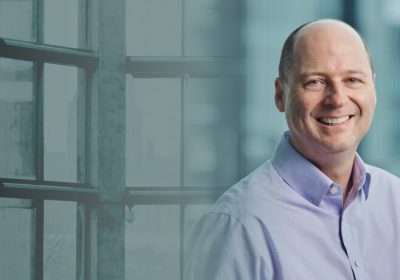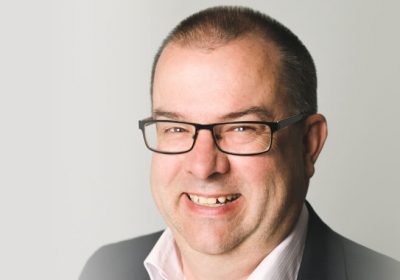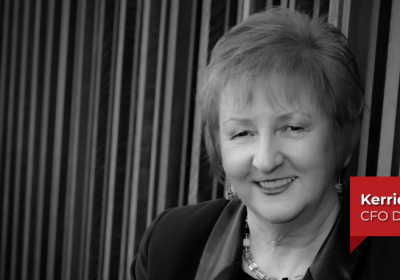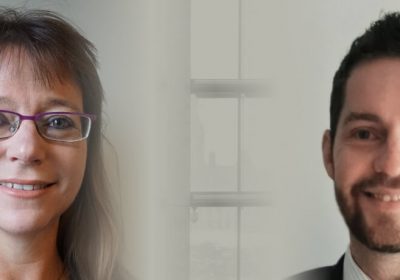
- Author: Emma Foster
- Posted: June 3, 2024
Energetic Reset > How CFO Gary Brown Led AGL’s New Direction
Soon after joining Australia’s largest electricity generator and emitter AGL in 2022, Gary Brown had a remit to reset the 186-year-old company’s strategic direction.
Being handed a blank sheet of paper and a remit to reset the strategy of one of Australia’s largest companies is not a task often tackled by many CFOs.
But that was Gary Brown’s brief soon after he joined energy provider AGL in early 2022.
“The ability to lead the strategy review was an enormous opportunity to have a very large impact not only on AGL, but ultimately on Australia,” says the Melbourne-based executive, previously CFO at French multi-national utility company ENGIE.
The review came off the back of a turbulent time for the 186-year-old company, which was facing into a swiftly changing industry landscape marked by mounting political, social and investor pressure for faster decarbonisation.
The message from its stakeholders was loud and clear: As Australia’s largest electricity generator and emitter, AGL needed to play a bigger role in materially reducing the nation’s carbon footprint.
“Our focus was very much around how do we help our customers decarbonise, how do we help AGL decarbonise, and how do we help the country decarbonise as quickly as possible, while at the same time ensuring access to reliable and affordable energy,” says Brown of the six-month review called by AGL’s board in response to stakeholder concerns.
“Where we got to was that we are bringing forward AGL’s exit from coal by a decade, to 2035, and we’ll develop 12GW of renewables and firming, which we feel is a very balanced approach to meeting those objectives.”
Analytics trumps emotion
Brown brought to the task many of the broad skills he’d picked up throughout his 25-plus year finance career, which started in a big four accounting firm before he jumped ship to join BHP’s graduate program. After taking on a variety of finance roles across the Big Australian, including a stint in Papua New Guinea, he earned his stripes in the oil, gas and energy sectors with senior finance roles at Shell and Viva Energy, before joining ENGIE.
“I didn’t get caught up in the emotion of it all,” says Brown, who took hold of AGL’s CFO reins from Damien Nicks, as Nicks stepped up to become AGL’s CEO as part of a spate of board and management renewal.
“I was very much focused on leading a team to deliver a really high-quality review, that was very analytical and data driven, with a very balanced lens over a clear objective – to help the country decarbonise and give our customers access to reliable and affordable energy,” he says.
“It was a complicated process, which is why it had to be data driven, not driven by gut feel; and making sure that a lot of very complex inputs – around what supply looks like, what demand looks like, what cost curves look like, what the carbon budget trajectory looks like – are ultimately refined down to a couple of very simple outputs.”
Winning back trust
Since unveiling the revised strategy in September 2022, and overseeing its roll-out as part of his broader CFO responsibilities, Brown says the keys to success to date have been transparency, communication and showing progress.
“We’ve spent a lot of time in the last 12 to 18 months communicating to the market very detailed plans around what we’re going to deliver, when, and how we’re going to utilise that capital and what shareholders should see,” he says.
“It’s been well received, and now that we’ve gained that trust, it’s very important we maintain it by continuing to hit proof points that show we’re delivering on the plan.”
Examples of progress he points to are the recent completion of the 250-megawatt battery in Torrens Island, South Australia, and reaching FID (financial investment decision) last December on a 500-megawatt $750 million battery in New South Wales.
“We also continue to progress our development pipeline – almost doubling that pipeline since we announced the new strategy – which is also super critical towards hitting those 2035 targets.” The plan is to see AGL’s emissions drop from around 40 million tonnes annually prior to the 2023 closure of its Liddell power station, down to net zero when all coal fired generation assets are exited.
Mind the bumps
Despite the progress, Brown doesn’t expect the implementation to be all smooth sailing. “We know it’s going to be a bumpy transition to a green future for Australia, and the transition does not come without risk and cost,” he says.
The many unknowns – from potential supply chain bottlenecks and competitive tensions to the cost of procurement and speed of regulatory approvals – mean Brown is working with AGL’s board and management more regularly to stress-test various risk scenarios.
“There’ll be periods when things move forward, and others when things move back, and we know we don’t have all the answers, so it’s important that we continue to communicate to the market as to the risks and opportunities, and how we’re looking to manage and mitigate risks as they come up.”
Strong CEO bond a boon
Brown says it’s been a “blessing” that CEO Damien Nicks had been AGL’s CFO and in senior finance roles since 2013, as his intimate knowledge of the financials meant he’s confident to give Brown good leeway.
“It’s important as CFO that you have the trust of the CEO, so that you’re walking in unison, and you’re given the space to be able to push, to prod, to challenge the business, to ensure you have really strong risk management and resource allocation,” he says.
“Damien has been supportive of me through all of that. We work very closely together around communicating AGL’s story to the market, and have a great relationship that allows us, ultimately, to drive better outcomes for the business.”
Future focus
Brown describes the whirlwind experience of his past two years at AGL as “extremely interesting and highly impactful”, from both a career perspective as CFO and personally.
“This isn’t a role that’s just about getting a company to perform,” he says.
“This is much bigger than just the company itself – it’s about helping the country decarbonise. It’s a rewarding experience because, in many years to come, we can all hopefully look back and think that AGL has made a significant contribution towards the country decarbonising.”
Gary Brown’s tips for aspiring CFOs:
Brown says there is no doubt that during his 25-plus year finance career the role of the CFO has elevated from its traditional focus on checking off “debits and credits” to becoming a strategic business partner, yet two fundamental traits for those seeking a path to a CFO role haven’t changed:
Land the basics to gain trust: It’s important in your first 12 to 18 months to really land the basics of your role and do it well. You need to be able to gain the trust of your managers. Once you have that, it gives you a license to look for additional opportunities within your role.
Embrace all opportunities: Even if they are quite small opportunities – they don’t need to be big, career-defining opportunities – it’s important that you embrace them rather than looking at them as another task. Learn from them and develop additional skills, because ultimately, to become a CFO, it’s important that you have a broad range of skills.








